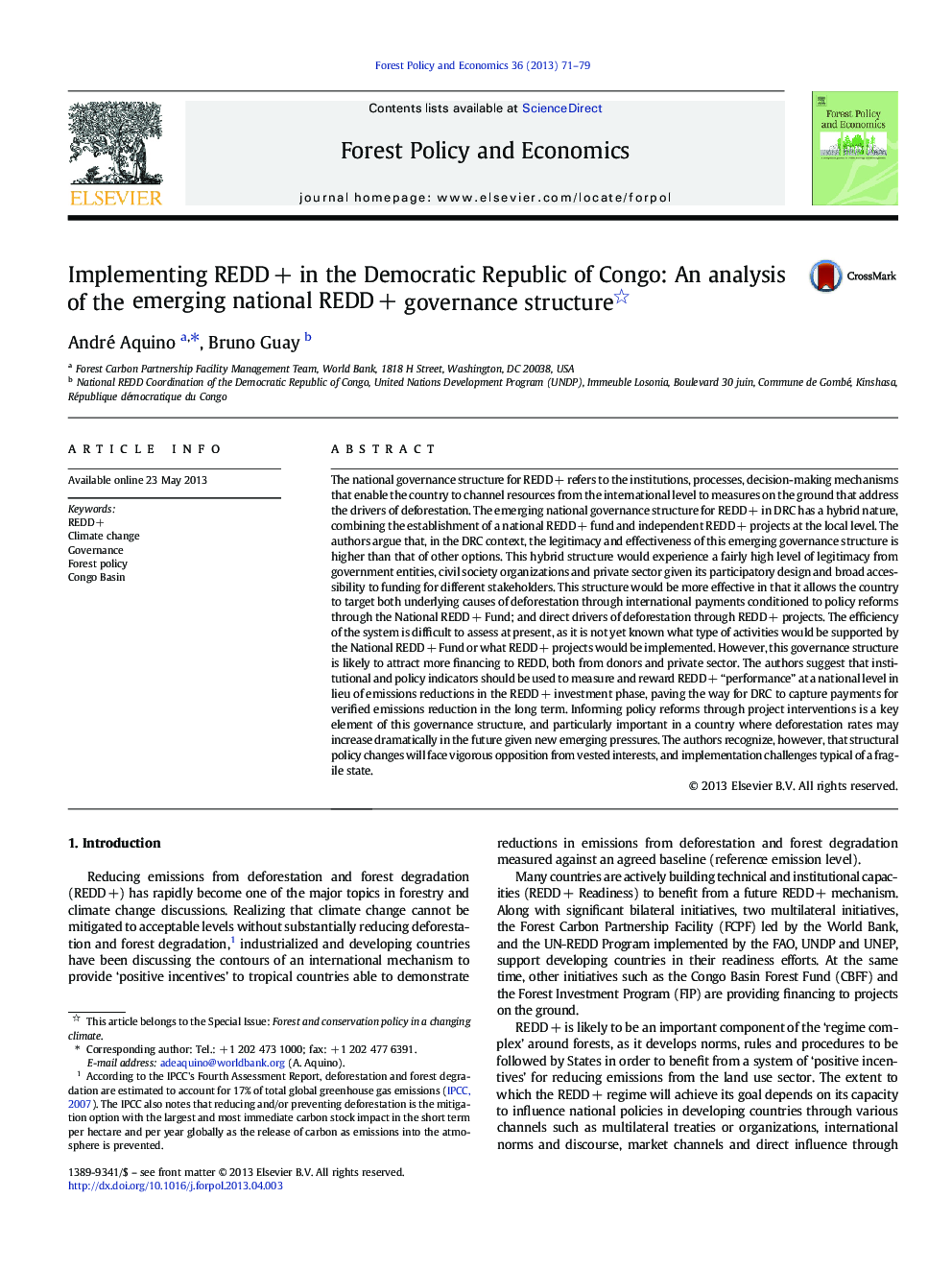| کد مقاله | کد نشریه | سال انتشار | مقاله انگلیسی | نسخه تمام متن |
|---|---|---|---|---|
| 91078 | 159731 | 2013 | 9 صفحه PDF | دانلود رایگان |

• A hybrid governance structure is best for the investment phase of REDD + in DRC.
• Projects funded through carbon markets can address the direct causes of deforestation.
• National policies are necessary to address the underlying causes of deforestation.
• Lessons learned through projects should inform the design of national policies.
The national governance structure for REDD + refers to the institutions, processes, decision-making mechanisms that enable the country to channel resources from the international level to measures on the ground that address the drivers of deforestation. The emerging national governance structure for REDD + in DRC has a hybrid nature, combining the establishment of a national REDD + fund and independent REDD + projects at the local level. The authors argue that, in the DRC context, the legitimacy and effectiveness of this emerging governance structure is higher than that of other options. This hybrid structure would experience a fairly high level of legitimacy from government entities, civil society organizations and private sector given its participatory design and broad accessibility to funding for different stakeholders. This structure would be more effective in that it allows the country to target both underlying causes of deforestation through international payments conditioned to policy reforms through the National REDD + Fund; and direct drivers of deforestation through REDD + projects. The efficiency of the system is difficult to assess at present, as it is not yet known what type of activities would be supported by the National REDD + Fund or what REDD + projects would be implemented. However, this governance structure is likely to attract more financing to REDD, both from donors and private sector. The authors suggest that institutional and policy indicators should be used to measure and reward REDD + “performance” at a national level in lieu of emissions reductions in the REDD + investment phase, paving the way for DRC to capture payments for verified emissions reduction in the long term. Informing policy reforms through project interventions is a key element of this governance structure, and particularly important in a country where deforestation rates may increase dramatically in the future given new emerging pressures. The authors recognize, however, that structural policy changes will face vigorous opposition from vested interests, and implementation challenges typical of a fragile state.
Figure optionsDownload as PowerPoint slide
Journal: Forest Policy and Economics - Volume 36, November 2013, Pages 71–79